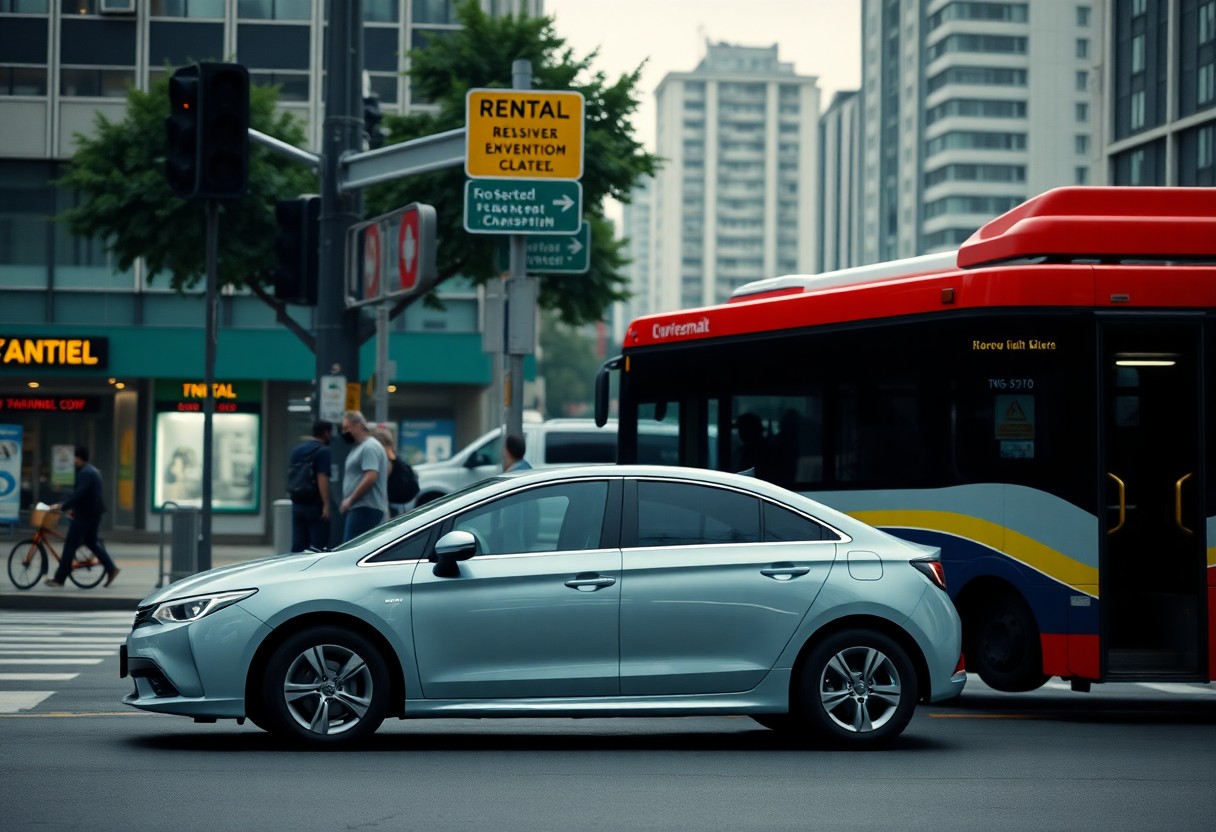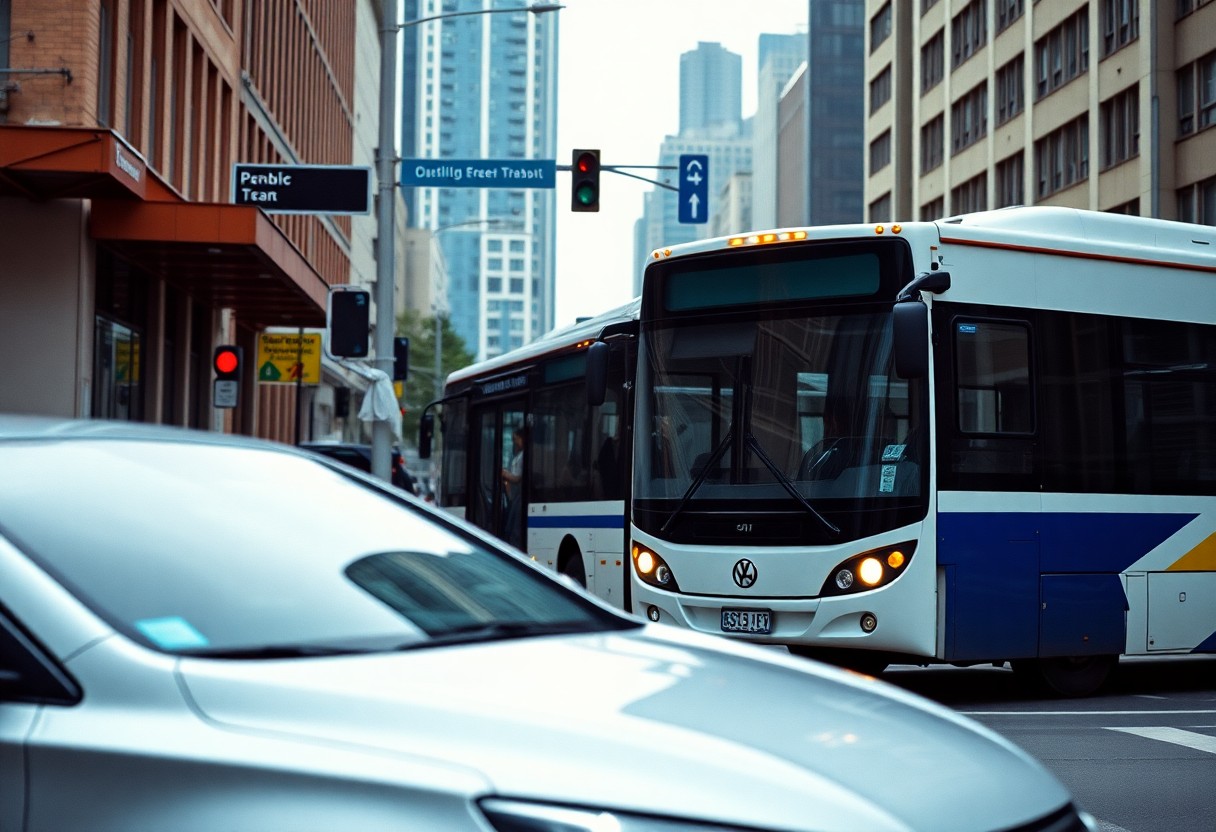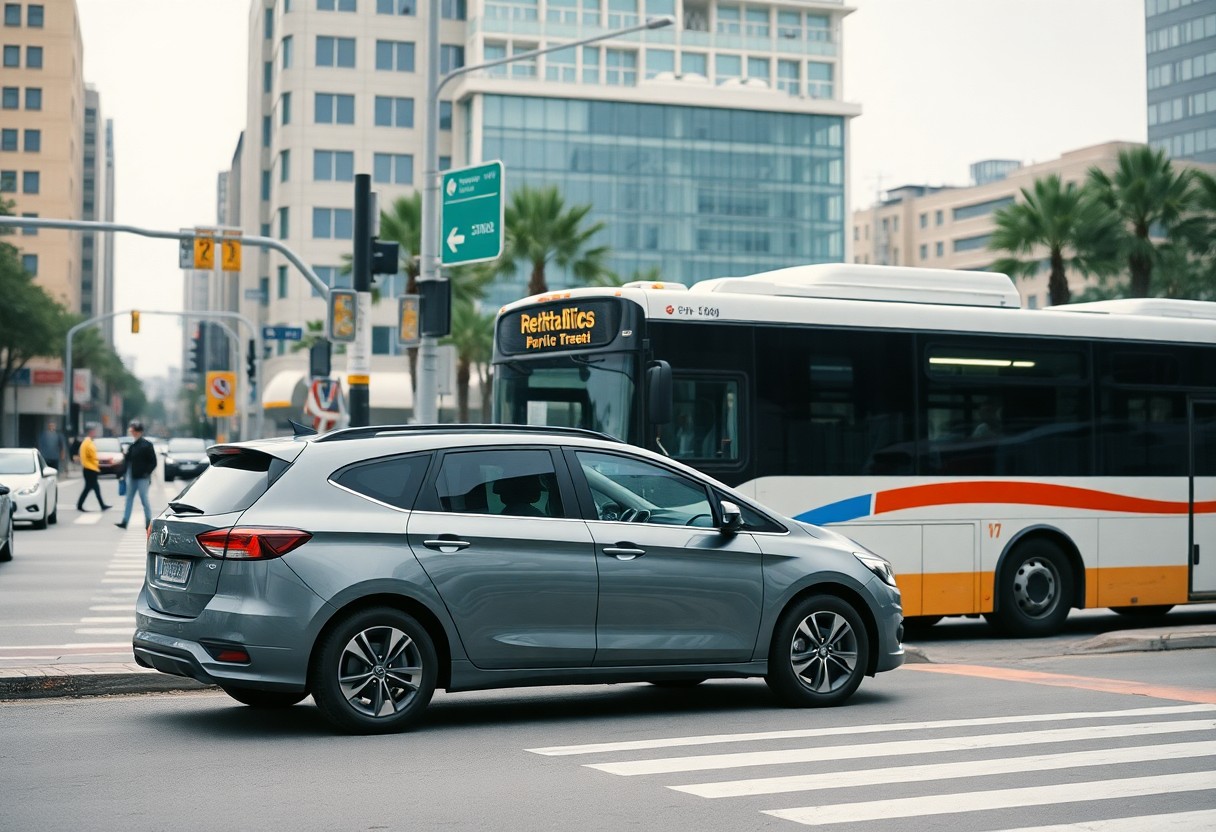As travel costs continue to rise and personal time becomes increasingly valuable, choosing the right transportation method for your trip is essential. Your choice will significantly affect both your budget and your overall travel experience. Whether you’re considering the flexibility of a rental car or the cost-effectiveness of public transportation, your decision depends on multiple factors such as your travel destination, itinerary, and the number of companions joining you. This detailed guide is crafted to help you evaluate key considerations, from hidden fees associated with rentals to the ease of accessing public transport, ensuring you make a well-informed decision tailored to your unique travel needs.
Unlock Travel Freedom with a Rental Car
Having your own rental vehicle offers unparalleled freedom that opens up a multitude of travel opportunities. By choosing a rental car, you gain full control over your travel itinerary, allowing you to explore destinations that extend beyond mainstream tourist spots. Recent research indicates that 73% of travelers prefer the flexibility of rental cars, as it enables spontaneous changes to their plans, making this option particularly appealing for those who value autonomy during their travels. With a rental car, you can create a personalized adventure that is uniquely yours.
Weighing the Pros and Cons of Renting a Car
Once you have secured a rental vehicle, you will enjoy newfound freedoms alongside certain limitations. You can discover remote destinations and adjust your travel schedule as needed, but be mindful of potential challenges such as parking fees, which can average $25-45 per day in busy city centers. Navigating through unfamiliar areas can also be tricky. Your rental car becomes a personal sanctuary, yet you will be responsible for managing fuel expenses and coping with traffic conditions that may arise during your journey.
Spotting Hidden Fees and Discovering Unexpected Savings
While the freedom of a rental car comes with costs, it can also yield unexpected financial benefits. Although initial rental rates might seem high, it’s crucial to recognize that traveling as a group can often be more economical than purchasing individual public transport tickets. Recent statistics show that families of four or more frequently experience savings of 15-20% on transportation by choosing a rental vehicle over public transit options, making it a smart financial choice for group travelers.
Delving deeper into the financial aspects uncovers additional factors to consider. Insurance premiums can range from $15-30 per day, but many credit card issuers offer rental car protection, which can alleviate some of these costs. Additionally, the fuel efficiency of modern rental fleets (averaging 30-35 MPG) helps to lessen overall expenses, while the convenience of door-to-door travel can save you significant time during your vacation.

Mastering Your City’s Public Transportation System
If you choose to utilize public transportation, understanding the system is your first step towards a smooth travel experience. Most major cities now offer intuitive transit apps that assist with route planning, real-time arrival updates, and ticket purchases. It is vital to familiarize yourself with the local transit network, which includes bus routes, subway lines, and transfer points. Research indicates that 55% of urban travelers save up to 30 minutes per trip by leveraging transit applications, enhancing your overall efficiency while navigating the city.
Successfully Navigating the Urban Public Transit Environment
Every city has its own unique public transportation system, with distinct patterns and operational rhythms. Expect to face peak hours, commonly between 7-9 AM and 4-6 PM, when crowds are at their thickest. Thus, your navigation strategy should incorporate alternative routes, as delays are common during these times. Including a buffer time of 15-20 minutes for essential appointments will help ensure you reach your destination punctually, reducing the stress associated with tight schedules.
Experiencing the Social Dynamics of Public Transport
Using public transportation also provides an enriching social experience. You share your journey with both locals and fellow travelers, allowing you to immerse yourself in the city’s true culture. While this can lead to occasional uncomfortable encounters, it also offers valuable cultural insights. Research suggests that regular public transit users develop advanced social adaptation skills as they navigate diverse social interactions, enhancing their travel experience.
Occasionally, you may find yourself maneuvering through a variety of social situations on public transport. From the vibrant energy of rush hour to the calm solitude of late-night rides, each time frame presents its own unique atmosphere. Safety is particularly important during off-peak hours, so it’s essential to remain vigilant and choose well-lit, populated areas to wait for your transit. Most transit systems now offer 24/7 security monitoring and emergency communication systems to ensure your safety while traveling.
Analyzing the Financial Aspects of Your Travel Decision
When evaluating your travel options, budgeting plays a crucial role in your choice between rental cars and public transport. Your transportation costs can vary significantly based on factors such as your destination, trip duration, and the number of travelers in your party. While rental cars offer greater flexibility, they also come with additional hidden costs like insurance, fuel, and parking fees. Although public transit may appear less expensive at first, frequent daily rides can add up quickly, impacting your overall travel budget.
Breaking Down the True Costs of Renting a Car
A thorough financial assessment of car rentals reveals expenses that extend beyond the basic daily rental fee. You should factor in $30-50 per day for insurance, average fuel costs of $40-60 per tank, and potential parking fees that can soar to per day in major urban areas. As a result, your total daily travel costs could range from $100-200, making car rentals more economical for group travel.
Decoding the Cost Structure of Public Transit Tickets
Initially, public transportation seems to be the more budget-friendly choice. In cities like New York, where the typical metro card costs around $34 for unlimited weekly rides, you can achieve significant savings compared to the expenses associated with renting a car. Moreover, you avoid additional costs such as parking and fuel, making public transport especially suitable for solo travelers who may be looking to save money.
Cost comparisons reveal that weekly public transport passes in many major cities range from $25-40, which provide unlimited rides. However, for families or groups of four or more, the cumulative cost of multiple transit passes could exceed the cost of a rental car, particularly when planning extensive daily travel or trips to regions with limited public transport options.

Maximizing Your Time Management for Travel Efficiency
When deciding between rental cars and public transport, prioritizing your schedule is vital. A rental car allows for direct, point-to-point travel, potentially saving you up to 40% of your travel time compared to public transportation options. Time is a precious commodity; although public transport may appear cheaper, it’s essential to account for the hours spent waiting, transferring, and walking to and from stations, which can significantly impact your overall experience.
Enjoy the Freedom of Flexible Scheduling with Rentals
In terms of time flexibility, a rental car provides you with complete autonomy over your departure and arrival times. You’re no longer constrained by rigid transit schedules, allowing for spontaneous detours or last-minute changes to your travel plans. This level of freedom is invaluable, especially when unexpected opportunities arise or when you encounter hidden gems during your explorations.
Navigating the Complexities of Public Transport Timetables
One of the main challenges associated with public transportation is adhering to strict schedules. Studies show that 23% of urban buses fail to operate on time during peak hours. Your journey may involve multiple connections, and delays in one service can create a ripple effect, disrupting your entire day’s plans.
To navigate public transport effectively, it’s prudent to allow for extra buffer time. Transport experts recommend adding 15-20 minutes to your estimated travel time for each connection. During rush hours or special events, consider doubling these buffers, as they can significantly influence the amount of time you have available for activities and sightseeing.
Understanding the Environmental Impact of Your Chosen Transportation
When considering your transportation options, it’s important to acknowledge the environmental implications of your choices. A single-occupancy rental car emits approximately 404 grams of CO2 per mile, while public transportation can reduce emissions by up to 45% per passenger. The decision between renting a car and using public transport has a lasting environmental footprint that should be considered in your travel planning.
Calculating Your Carbon Footprint Effectively
Every mile you travel contributes to climate change and environmental degradation. A fully-loaded bus can replace the need for 50 cars on the road, significantly lowering overall carbon emissions. Your journey in a rental car could produce 4-5 times more CO2 than the equivalent trip via bus or train; however, choosing electric or hybrid rental options can help reduce this environmental impact.
Exploring Sustainable Transit Alternatives for Eco-Friendly Travel
Upon arriving at your destination, you will encounter various environmentally friendly transportation choices. Electric car rentals can decrease your carbon footprint by up to 50% compared to traditional vehicles. Additionally, many cities now feature hybrid buses and electric trams, making public transport an increasingly sustainable option for eco-conscious travelers.
Your environmental impact can vary greatly based on the transportation choices you make. Consider adopting a mixed-method approach: rent an electric or hybrid vehicle for longer trips while utilizing public transport in crowded urban areas. Numerous rental agencies now offer green vehicle options, allowing you to maintain mobility while minimizing your ecological footprint.

Enhancing Your Comfort Level During Travel
Unlike public transportation, rental cars provide full control over your comfort preferences. You can easily adjust the climate, seating positions, and audio settings to match your personal tastes, creating a customized travel environment. This level of personalization becomes especially advantageous during extreme weather conditions or on long journeys, where comfort can greatly enhance your overall travel enjoyment.
The Comfort of Personal Space in Rental Vehicles
One of the key benefits of renting a car is the guaranteed personal space it offers. You won’t have to deal with crowded buses or trains, where personal space often shrinks to less than 4 square feet during peak travel periods. Your rental car becomes a private haven, allowing you complete control over who shares your travel environment and ensuring a more pleasant experience.
The Inconsistencies of Comfort Levels on Public Transportation
Comfort levels on public transit can vary significantly due to factors beyond your control. During peak hours, you may find yourself packed in with 150-200 passengers in a single subway car, greatly diminishing your comfort level. The experience often involves standing for long durations, especially during the average 38-minute commute in major metropolitan areas.
In a typical rush-hour scenario on public transport, noise levels can reach around 80-90 decibels, comparable to heavy city traffic. These conditions, paired with unpredictable delays and service interruptions, can make your journey less enjoyable and more exhausting, particularly when traveling with luggage or in a group.
Selecting the Best Transportation Option for Your Unique Needs
Ultimately, your choice between renting a car and using public transport should be guided by your specific travel needs. If you prioritize flexibility and comfort while traveling with family or friends, a rental car often provides the best value, even considering the higher initial costs. Conversely, public transportation tends to be a great option for solo travelers on a budget who stick to established routes in urban settings. It’s essential to evaluate factors such as your destination, group size, planned activities, and budget. By thoughtfully weighing these elements against your personal priorities, you can choose the transportation method that best aligns with your travel aspirations.
The Article: Renting a Car vs. Public Transport: Which is Best for Your Trip? appeared first on https://rentacar24.org/
The Article Renting a Car vs. Public Transport: Choose the Best Option for You Was Found On https://limitsofstrategy.com



Your insights into choosing the right transportation method resonate with many travelers today, especially as personal time and budget constraints tighten. I recently took a road trip where a rental car provided that much-needed flexibility. It allowed me to explore small towns and hidden gems that I wouldn’t have accessed via public transport. Yet, I found the costs added up quickly with insurance and fuel, prompting me to weigh those against the convenience.
It’s great to hear how your road trip experience turned out. There’s something special about hitting the open road and discovering those smaller towns that often get overlooked. I agree that a rental car really does offer an unparalleled level of freedom—you can take detours on a whim or linger a bit longer where you feel most inspired.
Ah, the age-old debate of rental cars versus public transportation—like the epic sibling rivalry of travel options. It’s amusing how each has its own set of quirks similar to a family dinner where someone always brings up that one embarrassing incident. Picture this: you’re traversing the picturesque backroads in your rental car, wind in your hair, and suddenly, you miss that stunning vista off to your right because you were juggling a soda cup and the GPS directions. Meanwhile, the cozy bus you took last month came with the added entertainment of a lively debate between two tourists about the merits of pineapple on pizza. Who knew public transport could spice up your travel tales?